Introduction
The medical device manufacturing landscape is undergoing a significant transformation with the FDA's finalization of the Quality Management System Regulation (QMSR). Published in January 2024, this regulation will replace the existing Quality System Regulation (QSR) and requires full compliance by February 2, 2026. This pivotal change aligns U.S. requirements with the international ISO 13485:2016 standard, creating a more harmonized global regulatory framework for medical device quality management systems.
For manufacturers currently operating under the QSR, this transition represents both a challenge and an opportunity. While the FDA has emphasized that the QMS requirements in Part 820 and ISO 13485 are substantially similar, companies will need to carefully assess their current systems and implement necessary changes to ensure compliance before the deadline.
Practical Implementation Steps
1. Conduct a Gap Analysis (Q3-Q4 2024)
- Compare current QSR compliance with ISO 13485:2016 requirements to identify specific areas needing attention
- Document all findings systematically with clear prioritization based on complexity and resource requirements
- Establish a baseline of your current quality management system's alignment with the new QMSR requirements
2. Develop a Comprehensive Transition Plan (Q4 2024)
- Create a detailed timeline with specific milestones to achieve full compliance by Q4 2025 (allowing buffer time)
- Allocate necessary resources including budget, personnel, and potential external consultants
- Establish a cross-functional implementation team with clear roles and responsibilities
3. Update Documentation and Processes (Q1-Q3 2025)
- Revise quality manual and policies to reflect ISO 13485:2016 terminology and requirements
- Update procedures and work instructions to address new or modified requirements
- Enhance risk management processes to integrate throughout the product lifecycle (a key emphasis in the QMSR)
4. Implement Training Programs (Q2-Q3 2025)
- Develop comprehensive training materials on the new QMSR requirements
- Conduct organization-wide awareness sessions to ensure all staff understand the changes
- Provide specialized training for quality personnel and process owners directly responsible for implementation
5. Conduct Internal Audits (Q3-Q4 2025)
- Perform thorough internal audits against the new QMSR requirements
- Identify and address any remaining gaps or areas of non-compliance
- Document all audit findings and corrective actions to demonstrate due diligence
6. Validate Compliance (Q4 2025 - Q1 2026)
- Conduct a final comprehensive review of all quality system elements
- Perform a mock FDA inspection to test readiness
- Address any final issues before the February 2, 2026 enforcement date
Impact and Considerations for Manufacturers
- Global harmonization benefits reduce regulatory burden for companies operating in multiple markets
- Competitive advantage for early adopters who complete the transition ahead of schedule
- Supply chain implications as requirements cascade to component suppliers and contract manufacturers
- Resource challenges particularly for smaller manufacturers with limited quality personnel
Strategic Considerations
- Documentation Strategy - Use this opportunity to streamline quality documentation rather than simply mapping old documents to new requirements
- Technology Solutions - Consider implementing eQMS systems designed for ISO 13485:2016 compliance
- Post-Implementation Monitoring - Plan for ongoing assessment as FDA adopts new inspection methodologies
- Risk-Based Approach - Prioritize changes based on patient safety impact and compliance risk
MEDevice Boston: Your QMSR Compliance Resource
MEDevice Boston’s conference program provides timely support for manufacturers finalizing QMSR compliance just months before the February 2026 deadline. The event offers:
- Expert-led educational sessions on implementation strategies, common challenges, and case studies from successful early adopters
- Networking with regulatory experts and peers facing similar compliance challenges
- Technology solutions showcase featuring eQMS platforms and documentation management systems designed for ISO 13485:2016 alignment
- Direct FDA insights on inspection expectations and regulatory interpretations during the initial enforcement period
This concentrated learning opportunity enables manufacturers to address final compliance gaps and ensure readiness for the February 2026 enforcement date.
Conclusion
The transition to QMSR represents a significant shift in medical device quality regulation, but with proper planning and execution, manufacturers can not only achieve compliance but also realize the benefits of a more globally harmonized quality management system. By starting now and leveraging resources like the MEDevice Boston conference, companies can ensure a smooth transition and continued market access when the February 2026 deadline arrives.
Learn More With These Industry Resources
Academic and Industry Reports
- U.S. Food and Drug Administration. (2025, June 27). Cybersecurity in Medical Devices: Quality System Considerations and Content of Premarket Submissions.
- U.S. Food and Drug Administration. (2025, June 27). Cybersecurity in Medical Devices: Frequently Asked Questions (FAQs).
- Federal Register. (2025, June 27). Announcement of FDA Guidance on Cybersecurity in Medical Devices.
- MedEnvoy Global. (2025). FDA Cybersecurity Guidance for Medical Devices.
- Wind River. (2024). Navigating Section 524B Medical Cybersecurity.



